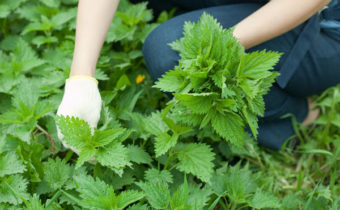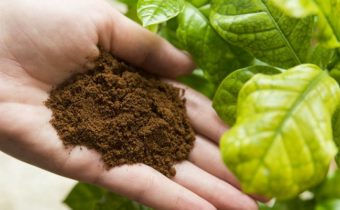Tomatoes are infected with a nematode, what to do?

A dangerous pest of garden crops and tomatoes, including nematodes, capable in the shortest possible time to destroy most of the plantings. It is important to know the main ways to deal with them and preventive measures to prevent the appearance of worms on the site.
Pest description
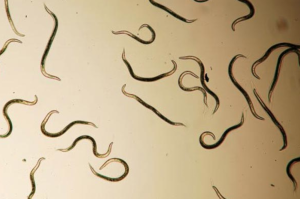
Nematodes are representatives of a large group of roundworms, living freely, as well as parasitic on animals and plants. For plants, three types of roundworms are dangerous:
- leafy;
- gallic (root);
- stem.
Greenhouse tomatoes are most often affected by the gallic southern nematode, which feeds on the sap of the plant. It is a worm, no longer than 2 mm. The pest larvae migrate in the soil, penetrate the tissues of the roots of tomatoes, grow to adult females, laying eggs again. After a short time, bloated roots appear on the damaged roots of the tomatoes — galls that turn brown. Within these neoplasms, parasites hatch larvae, and several generations of nematodes gradually appear.
The roots are strongly branched, shallow, the root beard appears (the appearance of filamentous new roots), ulcers form on the surface of the galls, which gradually leads to the death of the root. The growth of tomatoes slows down, the plants look depressed, sick, little color is formed, the resulting fruits do not increase in size. Then the plants die off.
Nematodes have a high biotic potential; in favorable conditions, the female lays up to 2-2.5 thousand eggs in 2-4 months. During the season, 1-12 generations of the pest develop, while insects are resistant to temperature changes and high humidity.
The danger of a pest is not only that nematodes destroy plants, but also that they carry phytopathogenic microorganisms that cause infections. Insect control is complicated by the fact that during their life cycle they undergo several intermediate forms, with different biological characteristics and it is difficult to find an effective means of destruction.
Symptoms of nematode tomato damage
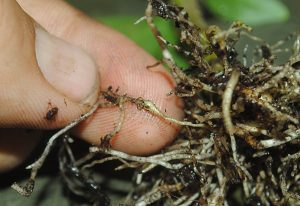
Parasites damage mainly tomatoes growing in the greenhouse, although in the areas infected by the nematode, plants on open ridges also suffer from the pest.
The first sign of damage is wilting of plants during the day, especially on sunny days. By appearance, it resembles verticillis or fusarium. Closer to the night, the leaves restore elasticity, so gardeners often think that the cause of wilting is high heat.
In damaged plants, after 10-12 days, the roots begin to “crawl out”, and their color is green or white. When digging up a tomato on the roots, thickening and swelling are found. The merger of small galls into singhalas - large formations, indicates that the degree of plant damage by a pest is high and such tomatoes are destroyed.
Fighting nematode
At the first sign of roundworms, the affected plant is carefully dug and burned. It is advisable to remove growing tomatoes near (within a radius of up to 1 meter) to eliminate the risk of their destruction. The soil in this place is sprinkled with boiling water, removed plant residues and burned.
In the autumn, after harvesting, it is recommended to plant the beds in the greenhouse with siderats (cereals), and then, at the onset of the first cold weather, to dig up the site, patching the crops in the soil.
Under such conditions, pest eggs, larvae and adult nematodes are frozen.
Chemicals
To get rid of parasites use special preparations nematocides, acting on nematodes through the skin or respiratory system. Facilities:
- methyl bromide;
- nemagon;
- karbofos;
- lindane.
Recommended chemicals are highly toxic and are used in strict dosage in large greenhouses.
Apply according to the instructions, while planting at this place is allowed only for the next season.
Biological agents
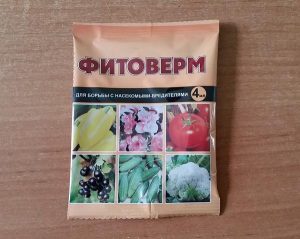
The following biological products are recommended:
- Fitoverm P;
- Nematophagin.
Fitoverm's active ingredient is aversectin C, due to which parasites and death occur in pests. The tool is convenient because it is low toxic, insects do not get used to the drug. Bring powder into the well when replacing the affected plants (the norms are specified in the instructions), to prevent infection by nematodes, sprinkle before planting tomato seedlings.
Nematophagin is a preparation containing the mycelium of the predatory fungus Arthrobotris oligospora, forming a network-hyphae for catching roundworms and destroying them. Available in liquid form, is introduced into the soil in the lesions of nematode damage, the norm: 20 ml per tomato bush. Nematofagin with Trichodermine gives a good effect.
Folk remedies
To destroy the parasites, spill the soil with boiling water (depth - up to 18-20 cm), then cover the treated places with a film. There is no guarantee of the death of all pests, but some of them die.
Prevention

As preventive measures used:
- deep digging of the soil in the fall;
- disinfection of land in the greenhouse with potassium permanganate, Nematofagin solution;
- planting near tomato plants, scaring nematodes - Tagetes, calendula.
It is important to clean up plant residues in time, observe the crop rotation of the soil, select varieties and tomato hybridsresistant to nematode damage. Preventing the appearance of a dangerous pest is easier than fighting it.


